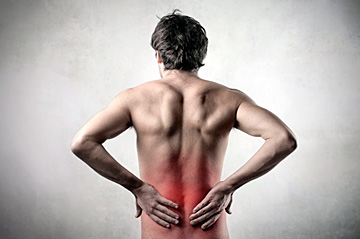Gravity-(noun) the force of attraction by which terrestrial bodies tend to fall toward the center of the earth.
This textbook dictionary definition eloquently explains what falling means. Gravity is constantly pulling us towards the ground with profound effect on posture and overall health. Throw the likelihood of traumatic falls and you have unlimited potential to cause bodily harm. It’s safe to assume that each of us will experience some type of fall in our lifetime. Every fall impacts body function, movement, mechanics, and efficiency. Even a minimal fall transfers energy from the ground through the body potentially causing severe injury. Energy is never lost or gained, it is simply transferred. If a body’s ability to absorb that energy is compromised dysfunction, pain, and injury will occur.
Different types of falls injure the body in distinct ways. Once you understand the mechanism behind a fall you can predict what areas of the body will typically be prone to pain. Forward falls onto an outstretched hand can cause injury to your wrist, elbow, and shoulder. However, the impact force travels up the arm and exits in the cervical spine (neck) and thoracic spine (upper back) similar to a whiplash type injury. Residual delayed symptoms may appear, which include headaches, neck pain, muscle spasm, tingling or numbness in the arm, and pain between the shoulder blades. Backward falls on the buttocks cause trauma to the spine, pelvis, hips, and head. Concussions are extremely common in backward types of falls due to the sudden whipping motion of the head. The tailbone portion of the spine is often bruised or fractured from impact velocity of the backwards fall. The energy transfer through the spine exits at the top of the head leading many people to complain of severe headaches and neck pain. Severe symptoms might not appear for several days or weeks following the fall. Falls from a height landing on the feet may injure the ankles, knees, hips, pelvis, and spine. Hairline fractures are often a side effect of foot landing falls, particularly in the shin bone and pelvis. Lower back pain is the most common spinal complaint after a foot landing fall due to the compressive forces of the impact.

All falls cause mechanical and functional damage to the body leading to inefficient movement and compensations. These neurological compensations are part of your nervous systems hardwired survival mechanism to avoid pain at all cost by taking the path of least resistance. This mechanism involves adaptation of muscles, connective tissue (fascia), bones, joints, ligaments, and nerves. Postural changes are ingrained in your movement patterns to protect and guard you from future injury. Common chronic side effects from traumatic falls include; arthritis, muscle spasm and tightness, soreness, spinal disc degeneration, disc herniations, and visual postural distortions. You may notice one shoulder becomes higher than another, rounded shoulders, neck far out over the shoulders, hips become tight and you walk with a foot flare. These dysfunctional movement patterns manifest into pain and injury years after the trauma. Everything in your health history contributes to the possibility of future injury. Even that fall you had off the swing on the playground when you were a kid. Everything is connected and everything matters.
So what can and should you do after a fall to help minimize injury? First and foremost is to determine the seriousness of the injury. If severe headaches, dizziness, nausea, slurred speech or sleepiness are present immediately seek emergency medical attention for these are common sign of a concussion (impact injury to the brain). Anticipate the onset of symptoms in the next several days following a fall. For swelling, inflammation, and muscle spasm apply ice for the first 72 hours. Heat is best used for chronic injuries and over muscles. Ice tends to be a more effective alternative for joint related pain to reduce swelling. A warm sitz bath is a very effective conservative treatment for post fall related soreness. Consult your primary care health provider if symptoms do not show improvement or worsen after 72-hours. Pain is the warning signal from your body that something is wrong. Do not ignore the pain message and hope things resolve without professional intervention. It is essential to visit a skilled clinician in manual therapy such as a chiropractor to ensure proper alignment of the spine and joint systems of the body. A doctor of chiropractic is an expert in assessment and treatment of acute and chronic musculoskeletal injuries with programs of preventive medicine. They will do a complete evaluation including x-rays to rule out severe trauma to the body and diagnose any underlying problems that may manifest in the future. Chiropractors will work in conjunction with your primary healthcare provider to ensure you receive the most effective care program for your type of injury. Once pain symptoms have improved your chiropractor will put you on a corrective exercise program involving strengthening and stretching for balance. This will train your body with proprioception (balance) to help improve your chances of catching yourself before falling in the future.
Never underestimate the long term deleterious effects of any fall. Every fall leaves its mark on your body. Play it safe and assume the fall had a negative impact on your health. Be proactive and take steps to ensure you have the maximum chance of full recovery. Little things mean a lot when it comes to your health. Make sure to speak to your chiropractor about effective ways to deal with falls that may occur.
By Perry Nickelston, DC, FMS, SFMA